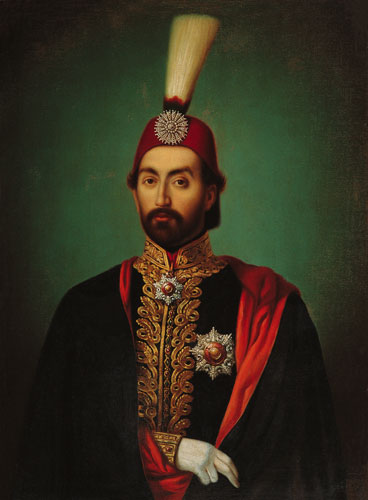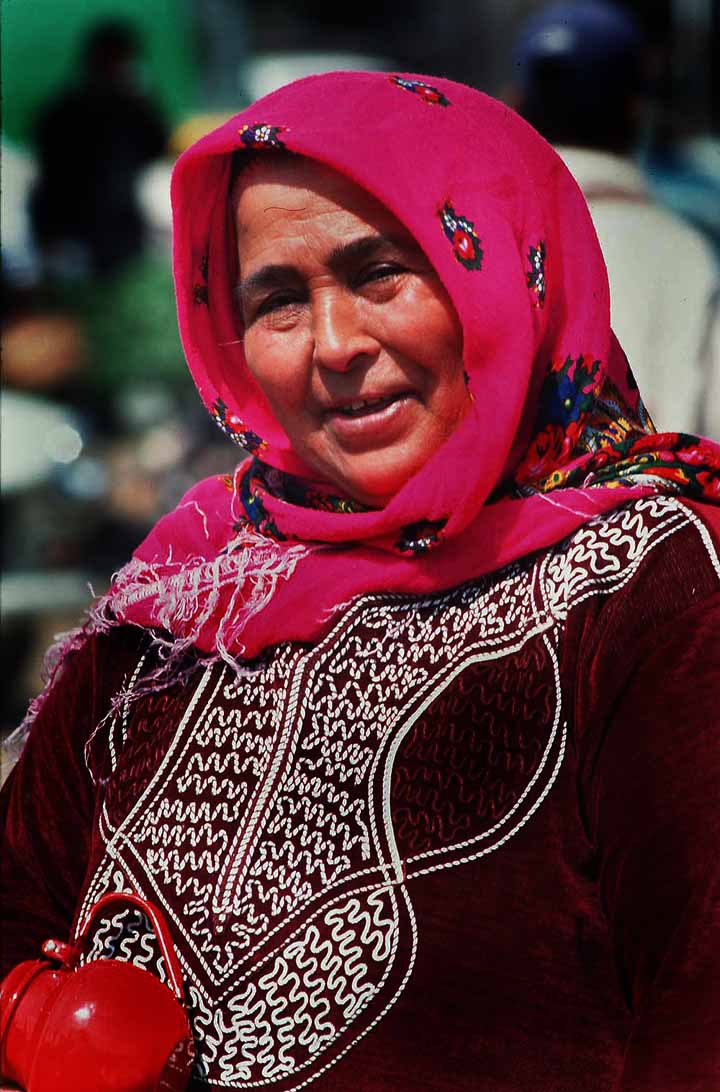|
Yashmak
A yashmak, yashmac or yasmak (from Turkish ''yaşmak'', "a veil") is a Turkish and Turkmen type of veil or niqāb worn by women to cover their faces in public. Today there is almost no usage of this garment in Turkey. In Turkmenistan, however, it is still consciously used by some married women in the presence of elder relatives of a husband. Description Unlike an ordinary veil, a yashmak contains a head-veil and a face-veil in one, thus consisting of two pieces of fine muslin, one tied across the face under the nose, and the other tied across the forehead draping the head. A yashmak can also include a rectangle of woven black horsehair attached close to the temples and sloping down like an awning to cover the face, called peçe, or it can be a veil covered with pieces of lace, having slits for the eyes, tied behind the head by strings and sometimes supported over the nose by a small piece of gold. See also *Islam and clothing *Burqa *Chador *Hijab *Tudung The tudong ( Ind ... [...More Info...] [...Related Items...] OR: [Wikipedia] [Google] [Baidu] |
Ottoman Clothing
Ottoman clothing or Ottoman fashion is the style and design of clothing worn during the Ottoman Empire. Ottoman period While the Palace and its court dressed lavishly, the common people were only concerned with covering themselves. Starting in the reign of Suleiman the Magnificent, administrators enacted sumptuary laws upon clothing. The clothing of Muslims, Christians, Jewish communities, clergy, tradesmen, and state and military officials were particularly strictly regulated during the reign of Suleiman the Magnificent. In this period men wore outer items such as 'mintan' (a vest or short jacket), 'zıbın', 'şalvar' (trousers), 'kuşak' (a sash), 'potur', an entari or kaftan (a long robe), 'kalpak', ' sarık' on the head; 'çarık', çizme (boots), 'çedik', 'Yemeni' on the feet. The administrators and the wealthy wore caftans with fur lining and embroidery, whereas the middle class wore 'cübbe' (a mid-length robe) and 'hırka' (a short robe or tunic), and the poor wore ... [...More Info...] [...Related Items...] OR: [Wikipedia] [Google] [Baidu] |
Purdah
Pardah or purdah (from Hindi-Urdu , , meaning "curtain") is a religious and social practice of female seclusion prevalent among some Muslim and Hindu communities. It takes two forms: physical segregation of the sexes and the requirement that women cover their bodies so as to cover their skin and conceal their form. A woman who practices purdah can be referred to as or . The term ''purdah'' is sometimes applied to similar practices in other parts of the world. Practices that restricted women's mobility and behavior existed among all religious groups since ancient times and intensified with the arrival of Islam. By the 19th century, purdah became customary among Hindu elites. Purdah was not traditionally observed by lower-class women. Physical segregation within buildings is achieved with judicious use of walls, curtains, and screens. A woman's withdrawal into purdah usually restricts her personal, social and economic activities outside her home. The usual purdah garment worn is ... [...More Info...] [...Related Items...] OR: [Wikipedia] [Google] [Baidu] |
Hijab
In modern usage, hijab ( ar, حجاب, translit=ḥijāb, ) generally refers to headcoverings worn by Muslim women. Many Muslims believe it is obligatory for every female Muslim who has reached the age of puberty to wear a head covering. While such headcoverings can come in many forms, hijab often specifically refers to a cloth wrapped around the head, neck and chest, covering the hair and neck but leaving the face visible. The term was originally used to denote a partition, a curtain, or was sometimes used for the Islamic rules of modesty. This is the usage in the verses of the Qur'an, in which the term ''hijab'' sometimes refers to a curtain separating visitors to Muhammad's main house from his wives' residential lodgings. This has led some to claim that the mandate of the Qur'an applied only to the wives of Muhammad, and not to the entirety of women. Another interpretation can also refer to the seclusion of women from men in the public sphere, whereas a metaphysical dimens ... [...More Info...] [...Related Items...] OR: [Wikipedia] [Google] [Baidu] |



